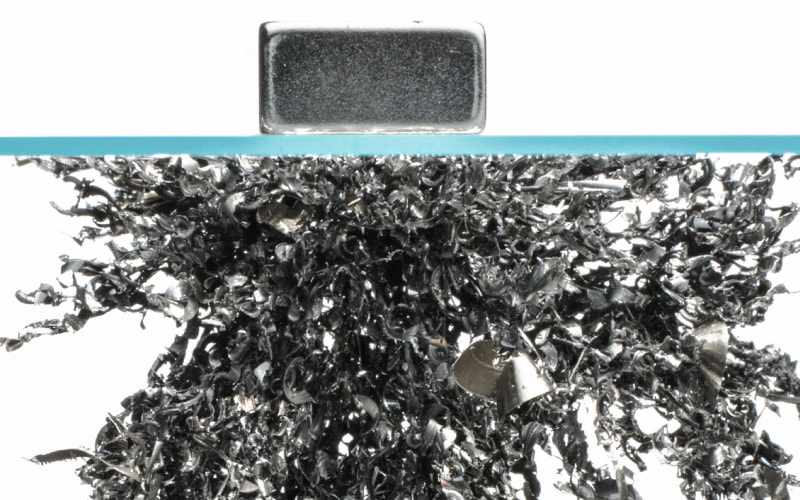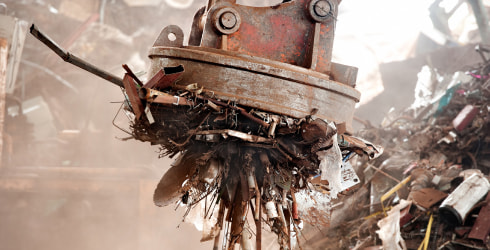Accepting orders 24/7. We'll resume shipping on July 5th
Serving global customers with custom-cut metals and trusted delivery.
Have Specs Ready? Send Us Your RFP for a Fast, Competitive Quote.


The most well-known legend of the discovery of magnets dates to 4,000 years ago in Northern Greece. According to the legend, a shepherd named Magnes was herding his sheep when suddenly the nails in his shoes and the metal on his staff stuck to the large black rock he was standing on. The curious shepherd dug into the earth and uncovered lodestones, which contain a natural magnetic material we know as magnetite. Lodestones were later named magnetite after Magnes himself.
Fast forward to the present day, magnetic materials have become indispensable to modern culture. More than just a refrigerator decoration, they are used in a large array of industrial and medical equipment, exist as components in almost all electronic devices, and have even become their own form of health therapy. In this article, we will look to answer frequently asked questions ranging from “is carbon steel magnetic?” and “which metals are not magnetic?”

Most metals with magnetic properties are ferrous: metals and alloys that contain iron. These ferrous metals include mild steel, carbon steel, stainless steel, cast iron, and wrought iron. Their high carbon content leads to being prone to rust (with the exception of stainless steel and wrought iron), but their tensile strength and durability make ferrous metals popular in large-scale construction projects, transportation, and many industrial applications. Likewise, their magnetic property is widely used in the creation of electrical appliances and motors.

Galvanized Steel
Galvanizing is the process of applying a protective zinc coating to steel in order to prevent rusting. Even though zinc is a nonmagnetic metal, the coating is so thin that the magnetic properties of the steel are not hindered. Since ferrous metals are prone to rust, galvanized steel is an excellent selection for projects that require magnetic properties in corrosive environments.
Hot-rolled Steel
Hot rolled steel has been roll-pressed at extreme temperatures, making the steel easier to form, and resulting in products that are easier to work with. After the process of hot rolling, the steel shrinks slightly as it cools, giving less control over the shape and resulting in scaled surfaces, slightly round edges, and small distortions. Because of this, hot-rolled steel is ideal for magnetic projects where precise shapes and tolerances are not as important as hardness and strength.
Cold-rolled Steel
Cold-rolled steel is hot-rolled steel that is further processed for more precise dimensions, closer tolerances, and a better surface finish. Cold-finished steel is distinctive by its aesthetic appearance, having well-defined corners, more uniformity, and a smooth surface. Because of this cold-rolled steel is best suited for magnetic projects that require accurate precision or where visual appeal is important. However, because cold rolled steel requires more processing than hot-rolled steel, it also comes with a larger price tag.
Ferritic & Martensitic Stainless Steel
Stainless steels are prized for their excellent corrosion resistance as a result of their high chromium concentration. There are various classifications of stainless, and not all of them have magnetic properties. Out of the various types, ferritic and martensitic stainless steels (the 400 series) possess magnetism due to their high iron concentration and atomic arrangement. Similar to galvanized steel, ferritic and martensitic stainless steels are best suited for projects that require magnetic properties in corrosive environments such as high-temperature, chemical, and outdoor use.
Iron
Iron, whether cast iron or wrought iron, is an alloy with very low carbon content. Its purity makes it more resistant to rusting than other ferrous metals. It is soft and ductile while still possessing tensile strength. Wrought iron is easily welded, can be reheated, and can be worked into various shapes – becoming stronger the more it is worked. Its malleability makes wrought iron a choice material for magnetic projects that require repeated fabrication and resistance to corrosive environments.
Although the above list may seem rather extensive, most common metals are non-magnetic.
Austenitic stainless steels, such as 304 and 316, contain a high amount of austenite which makes them mostly non-magnetic. However, the crystal structure of austenitic stainless steel can be altered through work-hardening or special heat treatment to form ferrite (found in ferritic stainless steels) in some locations making them partially magnetic.
Aluminum’s structure, similar to lithium and magnesium, makes it non-magnetic by nature. When under high enough magnetic fields most matter will exhibit some magnetic attraction. But under normal circumstances, aluminum isn’t visibly magnetic.
Lastly, Copper and its alloys aren’t magnetic but can interact with magnets to a certain extent due to their electrical conductivity.
Magnetic:
Online Metals is the world’s leading eCommerce metal supplier, specializing in small quantity cut-to-size metals and plastics, delivered in a fast and reliable manner.
Since 1998, Online Metals has expanded our catalog to over 85,000 different cut sizes, grown our national footprint to seven pickup locations across the U.S., and continued to improve upon our best-in-class customer experience.
Check out our materials: Alloy Steel, Aluminum, Anodized Aluminum, Beryllium Copper, Brass, Bronze, Carbon Steel, Copper, Cast Iron, Nickel, Nickel Silver, Plastic, Stainless Steel, Titanium, Tool Steel, Unistrut®, Wrought Iron, & Zinc
Shop by shape: Bars, Tubes, Sheets, Plates, and More.
Can't find what you're looking for? Submit a quote or contact our support team.